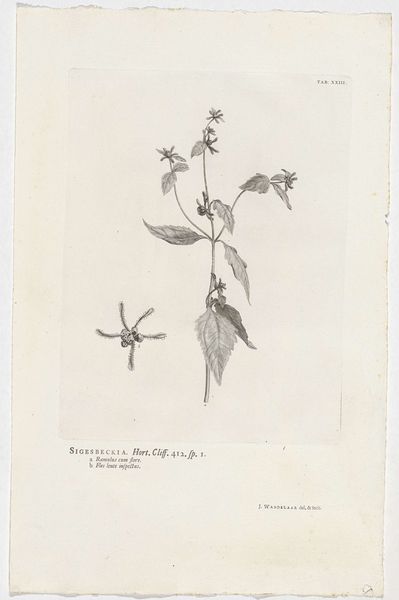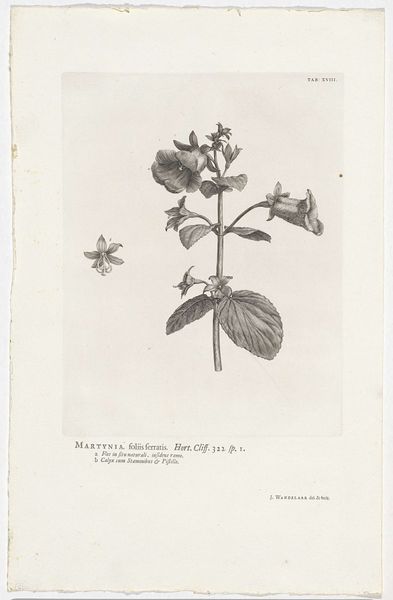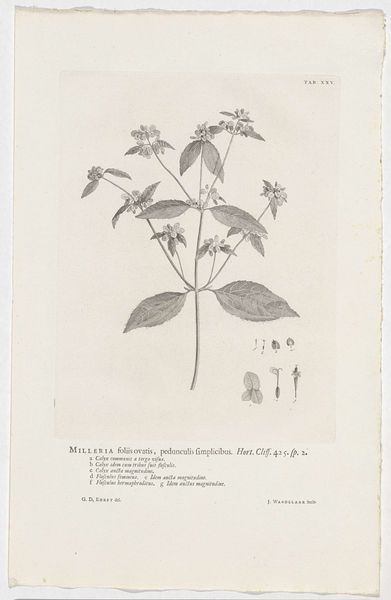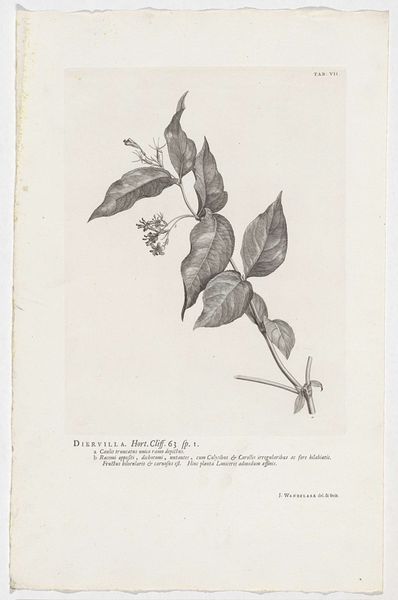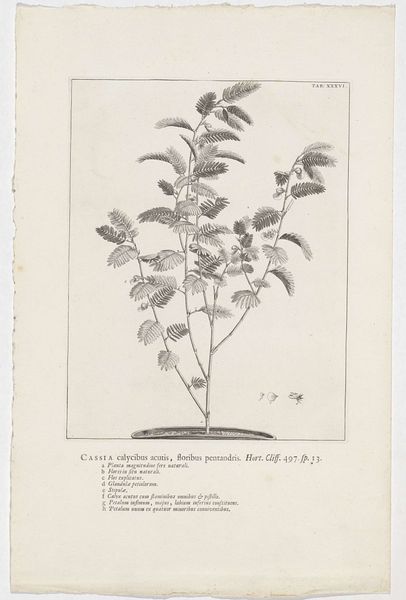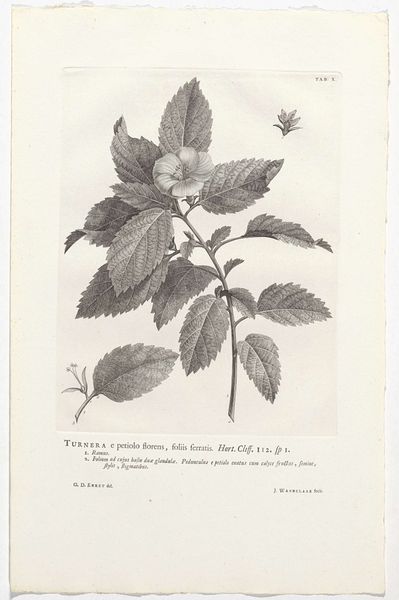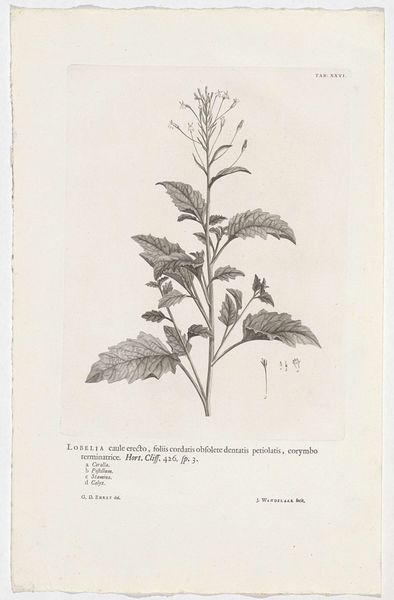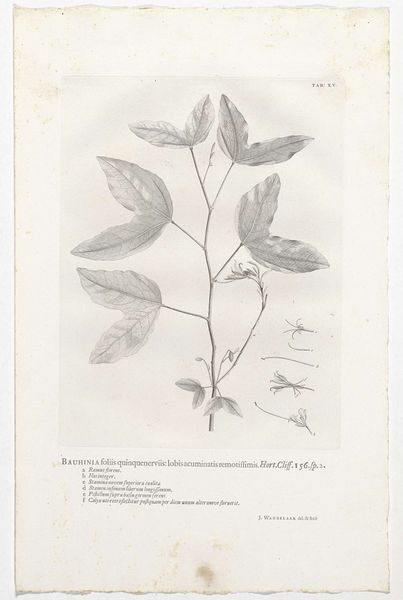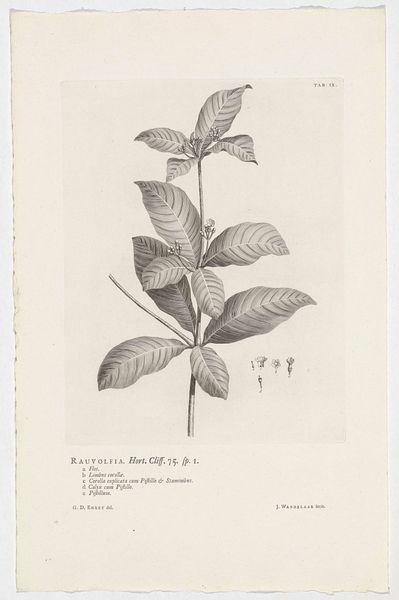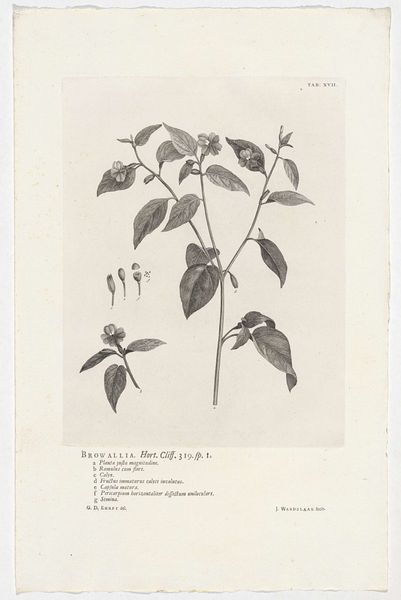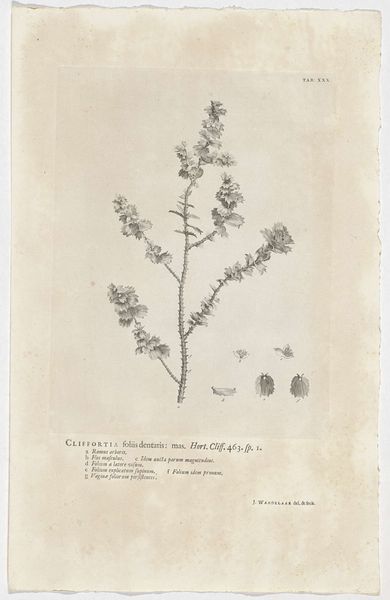
#
vegetal
#
old engraving style
#
flower
#
personal sketchbook
#
plant
#
botanical drawing
#
ink colored
#
sketchbook drawing
#
watercolour illustration
#
sketchbook art
#
botanical art
#
watercolor
Dimensions: height 318 mm, width 221 mm
Copyright: Rijks Museum: Open Domain
This is Jan Wandelaar's rendering of Collinsonia canadensis, made using etching in the 18th century. This botanical illustration presents a plant specimen with meticulous detail, reflecting the scientific interest that characterized the period. During the 1700s, there was an increased desire to classify and understand the natural world. Institutions like botanical gardens and scientific societies played a key role in commissioning and disseminating such images. They weren't merely aesthetic objects but rather tools for research and education. Made in the Netherlands, the detailed rendering of the plant, with its emphasis on accuracy, is indicative of the Dutch tradition of natural history illustration. But it also speaks to the expanding global networks of trade and knowledge. Plants were being collected and studied from far-flung corners of the world. As historians, we can use sources such as period texts and scientific publications to better understand the context in which Wandelaar's etching was created.
Comments
No comments
Be the first to comment and join the conversation on the ultimate creative platform.
